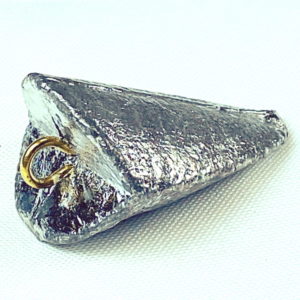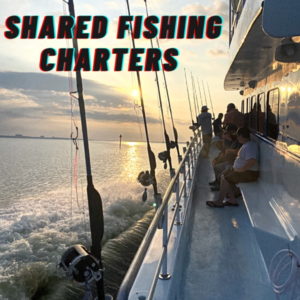*As an Amazon Associate I earn from qualifying purchases.

Sheepshead prefer all sorts of crustaceans and mollusks, but their absolute favorite is the fiddler crab. You won’t find many anglers that disagree that fiddler crabs are the best bait for sheepshead. Other great baits include sand fleas, shrimp, mud crabs, mangrove tree crabs, mussels, oysters, and even barnacles, among others.
The following list is in no particular order, except for fiddlers, of course.
- Fiddler Crabs
- Sand Fleas
- Shrimp
- Mud, Mangrove, and *Other Small Crabs
- Cut Blue Crabs
- Ghost Shrimp
- Barnacles
- Mussels
- Hermit Crabs
- Oysters
*Some small crabs are juvenile versions of a protected species. So, take care that you’re using “legal” crabs.
1. Fiddler Crabs – Best Bait For Sheepshead

Fiddler crabs are widely considered to be the best bait for sheepshead. So, if you can obtain them, that’s what you should usually try first. Fiddlers are a great size to be used whole. These crabs are somewhat delicate, but at the same time are a fairly hardy bait that stays on the hook well. Bigger fiddlers are the males, and can be differentiated by their large claw on one side. Females won’t have the big claw.
Their pinchers are not terribly strong, so if you do get pinched, it won’t inflict much, if any damage. However, nobody likes getting pinched. To prevent getting grabbed, either pick them up from behind, or pick them up by the big claw. If they do pinch you, it isn’t that big of a deal.
Where To Get Fiddler Crabs
You can purchase fiddler crabs for about $4 per dozen from a bait shop. Or, you can catch them yourself.
Fiddlers can be found on the ground near the shoreline of marshy areas. Those places away from a lot of foot traffic tend to be better, and they like places with some kind of structure nearby, such as grasses or mangroves. Low tide is the best time to seek them out.
Once you locate them, there are actually many ways to catch fiddler crabs. You can grab them with your bare hands, catch them with a net, dig them out of the ground, or stick a container in the ground, and come back later to collect your trapped fiddlers.
Once you catch them, store your fiddler crabs in a plastic bucket with a small amount of water to keep them wet, but not so much that you might drown them.
Check the video below for tips for successful fiddler crab hunting. This guy makes it look too easy.
How To Rig Fiddler Crabs
Some people like to keep the large claw of the males intact, for an attractant. Others think it’s best to remove the large claw, to help prevent a fish from stealing your bait so easily. I leave the claw on myself, but either way is fine. Sheepshead will have no problem eating that big claw.
Use a Number 1 Owner Hook (linked below), and insert it into the crab from the bottom, towards one side or the other, and come out the top hard shell. You could also use a jig head of some sort.

* Click image above to view prices on Amazon
Go easy when inserting a hook into a fiddler crab so as to not crush the crab. They’ll stay alive for a while, as long as you don’t use a huge hook.
Knocker rigs, Carolina rigs, or a simple split shot a foot or 2 above the hook all work great.
2. Sand Fleas aka Mole Crabs
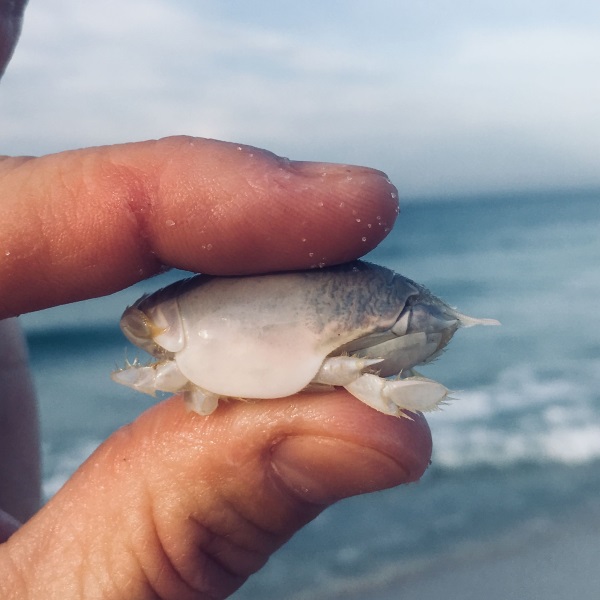
Whether you call them sand fleas, sand crabs, or mole crabs, they are a plentiful crustacean, that are the perfect size to fit into a sheepshead’s mouth. Sand fleas make an excellent bait for all sorts of saltwater species, sheepshead included. You’ll usually have to catch your own live sand fleas, which can be a bit of a learning curve.
Where To Get Sand Fleas
Sand fleas live in colonies, and can be gathered from the “swash zone” along the beach. I’ve also found colonies of them hanging out on shores inside passes. While it’s possible to catch them with your hands, and other little nets and things, I recommend using a true sandflea rake to make it easier on your back. Speed and stealth is key when trying to scoop mole crabs, as they can be very wary. I linked to a video below showing how to gather them.
Don’t expect to be able to store your sand fleas for a long period of time, maybe a day or 2. Sand crabs pee a lot, and that’ll kill them if they sit in it. So, you’ll need to arrange your container in such a manner where their juices can flow away from them. You can do this by adding sand to the bottom of your bucket, or you can nest 2 containers together, with the top container having holes for liquid to drain away. It’s best if you occasionally rinse their area with saltwater.
For a breakdown on good sand flea rakes, check out my article about that here – Best Sand Flea Rake
Tip: Be careful when using a sandflea rake, as a large wave can sneak up on you and slam the sharp aluminum edges into your shins. That can result in a nasty cut. Don’t ask how I know.
How To Rig Sand Fleas For Sheepshead
My preferred way of rigging sand fleas for sheepshead is to insert a #1 hook into the digger claw and back out the top shell. Other anglers hook them from the other end, but I honestly don’t think it matters much.
As with any of the bait options on this list, you can use a Carolina rig, knocker rig, or a piece of split shot up the line.
3. Shrimp For Sheepshead
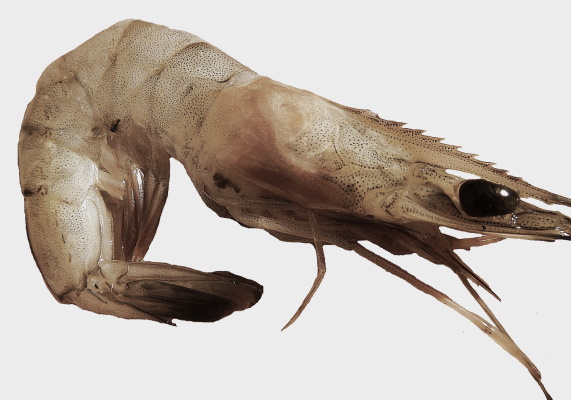
If you stick around the saltwater community very long, you’ll hear over and over and over again that everything eats a shrimp. Sheepshead are no exception, as they love shrimp.
Both live and fresh dead shrimp are good baits for convict fish. This is further proven by the fact that the world record sheepshead, over 21 lbs., was caught on a live shrimp.
The negative to using shrimp is that since everything eats it, it can be difficult to get a sheepshead on the hook before some other species takes the bait first.
Where To Get Bait Shrimp
There are ways to catch shrimp yourself, but generally you’ll have to purchase live shrimp from a local bait shop. Fresh dead shrimp can be purchased from bait shops, seafood markets, or grocery stores.
How To Rig Shrimp For Sheepshead
When fishing with live shrimp, smaller is better, as sheepshead have small mouths. If the shrimp are too big (over 1.5 inches), you’re probably better off pinching them in half to be used as a fresh dead offering.
For live shrimp, use a small #1 hook and run it into the tail section and back out the body, thereby burying most of the hook shank, leaving the hook point exposed. Perform similar rigging for fresh dead shrimp. Both the head and tail halves will work as fresh dead bait. Rig both similarly – bury the hook shank out of sight.
Fish your shrimp on a fish finder rig with a short mono leader, a knocker rig, a jig head, or with a piece of split shot attached some distance above the bait. You need approximately a 15 lb. mono mainline or a mono leader attached to your braid.
4. Other Small Crabs

Depending on your fishing location, you’ll have different small crabs available to you as bait. Some of the best options in the sheepshead’s range are mud crabs and mangrove tree crabs.
Anytime you’re using small crabs as bait, you need to familiarize yourself with how to differentiate between legal crabs, and any similar protected species. For example, when using mud crabs, you need to be sure you don’t accidentally collect any stone crabs by accident.
Where To Get Them
You’ll usually have to catch your own little crabs by hand. They’ll be found around, and underneath hard structures, such as jetty rocks.
To find mud crabs, you’ll need to flip, potentially jagged, rocks over at low tide. Take care not to cut yourself.
Mangrove tree crabs can be plucked off trees, docks or bridges. Grab them by hand, or knock them off and into nets or buckets that you hold underneath them.
TIP: Be careful not to confuse any protected species of crabs with legal crabs. Sometimes juvenile versions of crabs can complicate things. Before using small crabs as bait, get familiar with the “legal” crabs in your area, and how to differentiate between those and their protected brethren.
How To Rig
Rig any other small crabs similarly to fiddler crabs – run a #1 hook inserted from the bottom and out the top.
5. Cut Blue Crabs
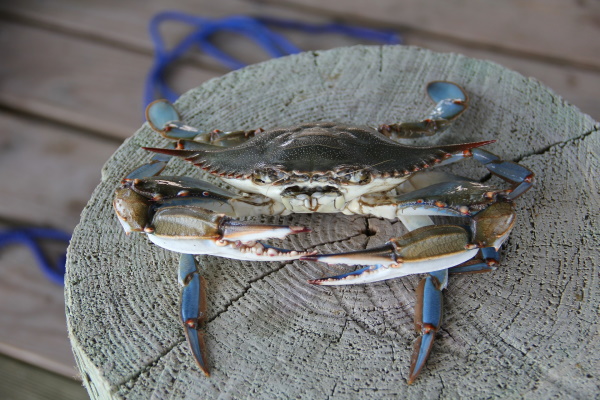
Blue crabs are another great bait for sheepshead. However, they’re obviously way too big to be used whole. Therefore, you’ll need to at least quarter up blue crabs before using them. If this is what you have available, go with it. Otherwise, other options will be less of a hassle.
When breaking blue crabs apart, save the bits and pieces and be sure to throw those overboard to help stir up the convicts.
Where To Get Blue Crabs
Blue crabs can be purchased in bait shops, or you can catch your own. To catch them, set out crab traps, hand net them in clear water, or you can even hand line them. Be careful not to get pinched, as they have strong claws. Hold them from the back to avoid the claws, until you can remove them.
Rigging Blue Crabs For Sheepshead
To use blue crab as sheepshead bait, remove the claws and break the top shell off. Then remove the legs, and cut the remaining section into quarters by using a pair of scissors, or a knife. Depending on the size of the crab, you may need to go even smaller. Run your #1 hook into one of the leg holes and out the body, then you’re in business.
6. Ghost Shrimp
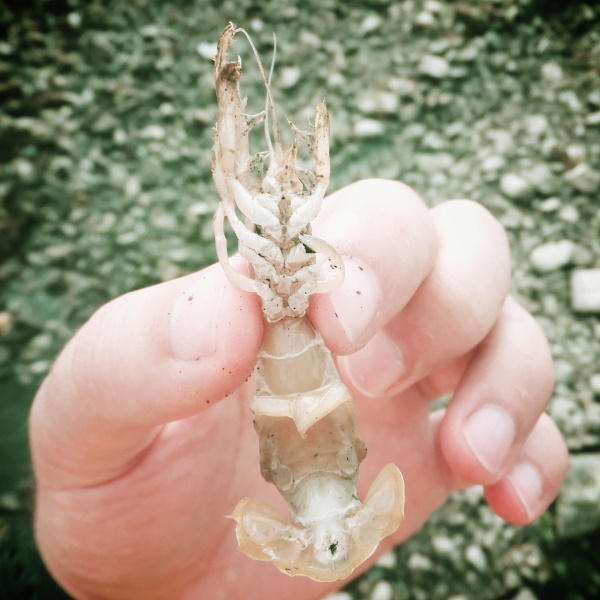
Being an ideal size, ghost shrimp make a fine sheepshead bait. They are very effective, and best of all, they are FREE! However, they are not the most convenient bait to gather, you have to earn them. You’ll have to first locate them, and then suck them out of the sand with a homemade device.
Much like sand fleas, there will be a bit of a learning curve to collecting ghost shrimp. So, this bait might be better left for the locals, or those that fish often.
Where To Get Them
You’ll need to invest a little cash, and perhaps some time, to either build or buy yourself a ghost shrimp pump. Once you have a pump, you’ll need to find their small holes in the sand that give away their burrow locations.
Once you locate some promising spots, use your pump to suction them out of their burrows. You can do this on mud flats, or near the surf’s edge where there is heavily saturated sand. Below is a good video on how to construct a ghost shrimp pump for as little as $20.
How To Rig Them
Rig ghost shrimp just as you would regular shrimp. Start from the tail section, and thread them onto the hook to hide most of the shank. Leave the hook point exposed.
7. Barnacles

Sheepshead love barnacles. In fact, that’s often what they’re feeding on when you spot them in the water along bridge and pier pilings. In Florida, barnacles do not have size limits or relevant bag limits, so you can freely use them as both chum and bait. I presume that’s likely the same elsewhere.
Where To Get Them
You can find barnacles on bridges, piers, and rocks near the water line. To collect them, hold a net or bucket beneath them, and knock them free using a shovel or scraper of some sort. I have even seen folks use old rusty machetes to knock them free. Make sure you don’t scrape barnacles off of private docks or other structures without permission.
Use the smaller pieces as chum and save the larger pieces for bait. Barnacles are a great backup bait that you can turn to, in case you run out of your primary bait.
How To Rig Barnacles
Run your hook through the back of the barnacle and slowly work the hook back out the hole in the front. If they’re really small you can use 2 at a time.
Per the FWC (Florida Wildlife Commission) website below, you can use barnacles as both chum and bait. You’ll need to check your own local regulations for applicable laws in your local area.
https://myfwc.com/fishing/saltwater/recreational/shellfish/
8. Mussels
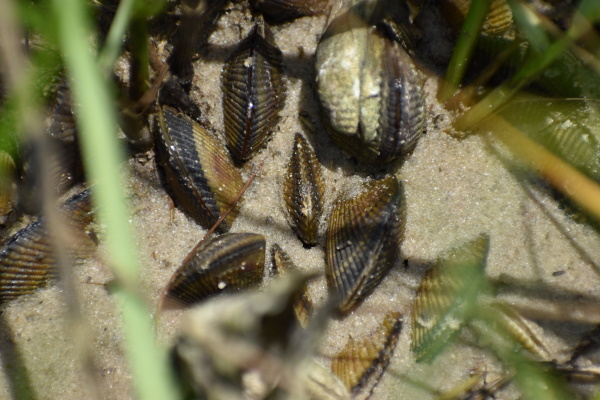
The mussels you find in bait shops won’t necessarily be the same ones you find in seafood markets for human consumption. However, they all should work. The ribbed version, as shown above, is not as good for humans, but fish love them.
Although mussels are a great bait for sheepshead, the problem is getting them to stay on the hook. So, you’ll probably want to use some type of fishing thread to secure it in place, such as Elastic Miracle Thread. With an elastic thread like this, you won’t have to tie any knots. Simply wrap it around multiple times and break it off.
Where To Get Them
Mussels can be had for free. Check rocky areas or bridge pilings at low tide. Take a bucket or bag and collect them off hard surfaces near the waterline.
You can also buy fresh mussels from a seafood market.
TIP: To rig soft gooey baits, such as mussels and oysters, use an elastic fishing thread to secure the flesh to your hook. No knots are required when using such thread. Simply wrap it around the bait, and break the thread off.
How To Rig Mussels For Sheepshead
To get to the usable part of a mussel, simply pop the shell open and very carefully pry it apart with a knife. Using a knife, or the back of your fingernail, scoop out the gooey middle. Using a good hook, appropriately sized for sheepshead, repeatedly work the flesh onto the hook to cover as much of the shank as possible.
For best results, use bait thread (linked below) to secure the mussel to the hook. This prevents the bait from coming off during a cast. Simply wrap the elastic thread around 15-20 times and break it off.

* Click image above to view prices on Amazon
9. Hermit Crabs
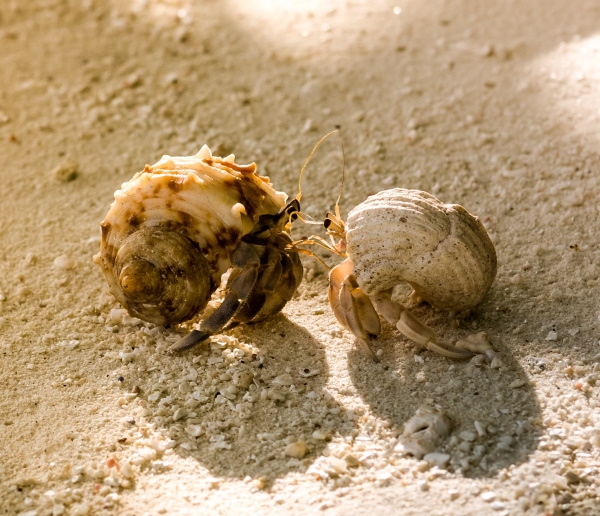
Hermit crabs are a good bait for many species. Quite honestly, I don’t know why they aren’t used as bait more often. I guess people don’t want to deal with getting them out of their shells, because you will need to do that before dropping them down for sheepshead.
It should be noted that the hermit crabs you use for bait, are not the same crabs you find in gift shops or pet stores. Pet hermit crabs are land dwellers, and bait crabs are sea dwellers.
TIP: The hermit crabs you catch and use for bait are not the same type of hermit crabs you find in beach side gift shops. Pet hermit crabs are terrestrial, and bait crabs are sea dwellers.
Where To Get Them
Supposedly some bait shops carry hermit crabs, but I’ve never seen them. So, you’ll likely be catching your own. Probably the easiest way to get them is to drop a crab pot down near some type of structure, such as a dock, and come back later. Alternatively, if you can find rocky areas near the beaches and passes, there should be hermit crabs hanging around. They can also be found further inside passes along calmer waters. They are harmless and can be gathered by hand. Hermit crabs can be kept alive for a couple days in a bucket.
How To Rig Them
To remove a hermit crab from it’s shell, you can try to pull it out. If that doesn’t work, you can smash the shell with a hammer or rock, or break it with pliers. Another tactic that supposedly works is to drop them into a bucket of tap water. They don’t like freshwater, and will attempt to escape. I’ve never tried that, but I’ve heard it’s a thing.
To rig a hermit crab, simply run a hook through it’s body starting from the tail end. If you’d like a more secure bait, wrap it a few times with elastic fishing string.
10. Oysters

Although oysters are an effective bait for sheepshead, you’ll have to take care to follow any necessary regulations for your area. Oysters are much more heavily regulated than some of the other options on this list. In Florida, as an example, oysters have a season, bag limit and even a size limit. There are even particular “shellfish harvesting areas” within Florida that you have to be aware of.
As long as you follow all necessary rules and regulations, you can use oysters as a very effective sheepshead bait. With the amount of regulation surrounding them, oysters seem like too much trouble for my taste.
Oysters tend to have many more regulations involved than some of the other bait options. For that reason, they are not tops on my list.
Conclusion
As you can see, sheepshead actually eat a wide variety of baits. There are even more options that I didn’t list, such as artificials, sea urchins, and sea worms, but it’s probably best to stick with something from the list. Finally, make sure you have plenty of bait, as sheepshead are renowned bait stealers.
Good Luck!
Augustus Clay
If you liked this article, perhaps you’d also be interested in my 5 Step Sheepshead Fishing Guide.

